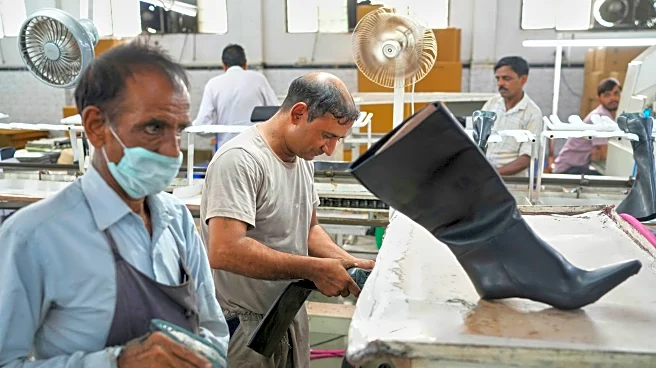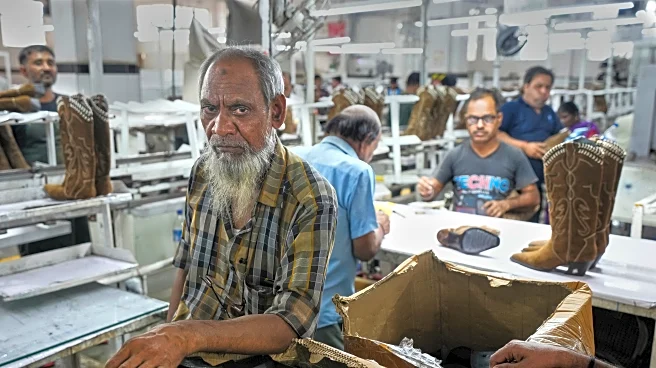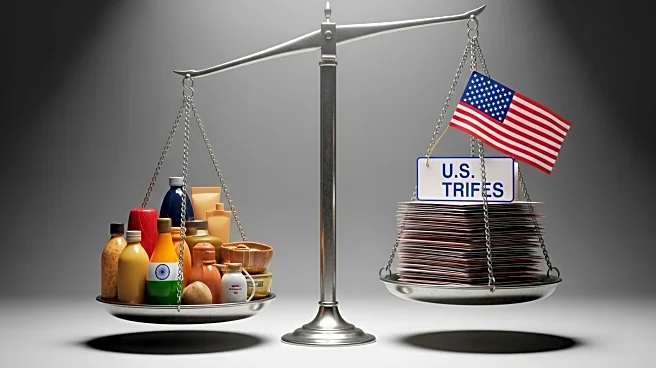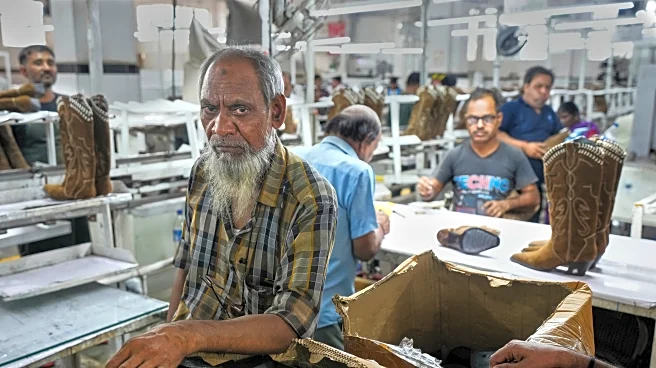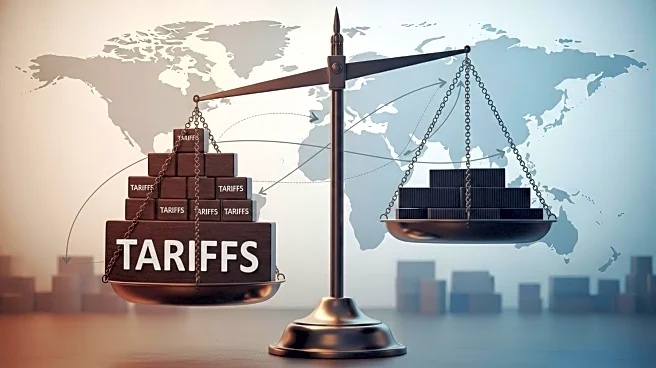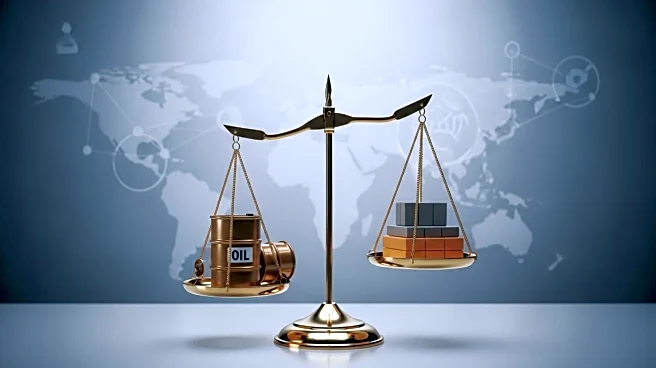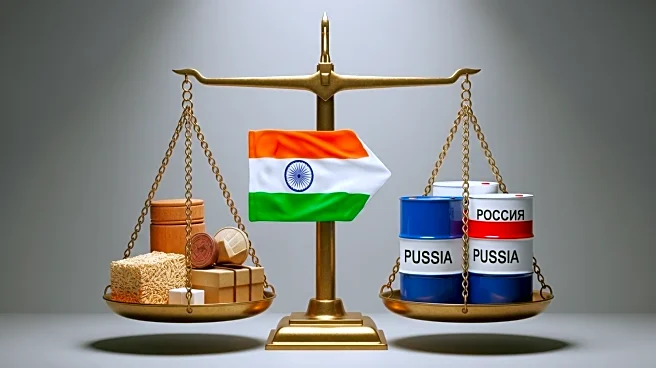What is the story about?
What's Happening?
The United States has implemented steep tariffs on a range of Indian products, significantly impacting India's export market. President Trump announced a 25% tariff on Indian goods, which was later increased to 50% due to India's purchase of Russian oil. This move threatens $48.2 billion worth of Indian exports, potentially making shipments to the U.S. commercially unviable and leading to job losses and slower economic growth in India. The tariffs primarily affect labor-intensive sectors such as textiles, gems, jewelry, leather goods, food, and automobiles. However, pharmaceuticals and electronic goods have been exempted from these additional tariffs. The Indian government is considering local reforms to boost domestic consumption and reduce reliance on the U.S. market.
Why It's Important?
The imposition of these tariffs could have significant repercussions for both the Indian and U.S. economies. For India, the tariffs threaten to disrupt its export-driven sectors, leading to potential job losses and economic slowdown. This could weaken India's industrial value chain and its presence in the U.S. market. For the U.S., the tariffs could lead to higher prices for consumers on imported goods from India. The situation also highlights the ongoing trade tensions between the two countries, which have yet to reach a bilateral trade agreement. The tariffs are part of a broader U.S. strategy to pressure India over its trade relations with Russia, particularly in the context of the Ukraine conflict.
What's Next?
India is planning to implement local reforms to mitigate the impact of the tariffs. These include changes to the goods and services tax to lower costs for consumers and financial incentives for exporters. The Indian government is also exploring expanding its export markets to regions such as Latin America, Africa, and Southeast Asia. Trade negotiations with the European Union may gain urgency as India seeks to diversify its trade partnerships. The U.S. and India have held multiple rounds of trade negotiations, but a resolution remains elusive, with the U.S. seeking greater access to India's agriculture and dairy sectors.
AI Generated Content
Do you find this article useful?


